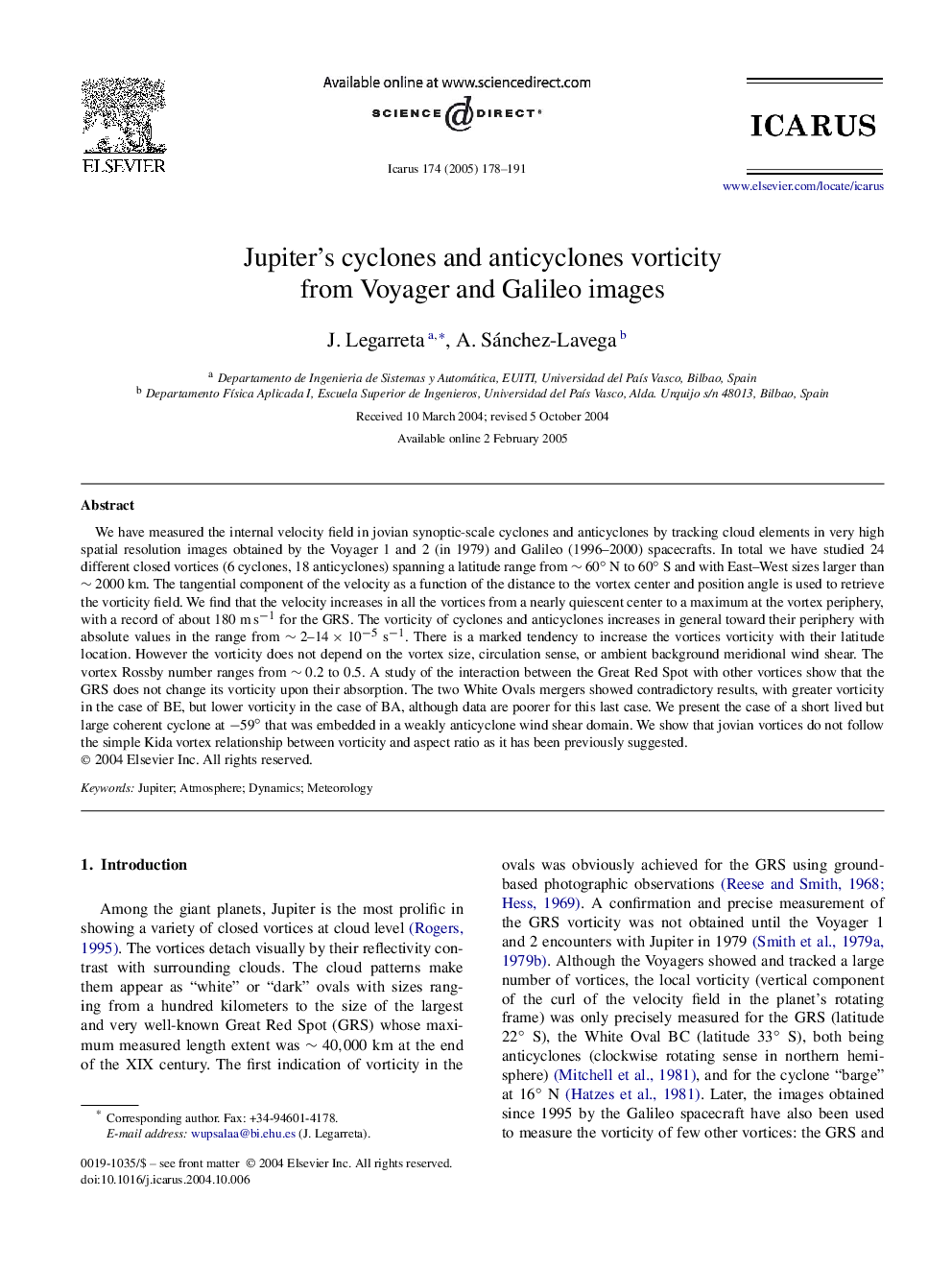| Article ID | Journal | Published Year | Pages | File Type |
|---|---|---|---|---|
| 10702262 | Icarus | 2005 | 14 Pages |
Abstract
We have measured the internal velocity field in jovian synoptic-scale cyclones and anticyclones by tracking cloud elements in very high spatial resolution images obtained by the Voyager 1 and 2 (in 1979) and Galileo (1996-2000) spacecrafts. In total we have studied 24 different closed vortices (6 cyclones, 18 anticyclones) spanning a latitude range from â¼60° N to 60° S and with East-West sizes larger than â¼2000km. The tangential component of the velocity as a function of the distance to the vortex center and position angle is used to retrieve the vorticity field. We find that the velocity increases in all the vortices from a nearly quiescent center to a maximum at the vortex periphery, with a record of about 180 mâsâ1 for the GRS. The vorticity of cyclones and anticyclones increases in general toward their periphery with absolute values in the range from â¼2-14Ã10â5sâ1. There is a marked tendency to increase the vortices vorticity with their latitude location. However the vorticity does not depend on the vortex size, circulation sense, or ambient background meridional wind shear. The vortex Rossby number ranges from â¼0.2 to 0.5. A study of the interaction between the Great Red Spot with other vortices show that the GRS does not change its vorticity upon their absorption. The two White Ovals mergers showed contradictory results, with greater vorticity in the case of BE, but lower vorticity in the case of BA, although data are poorer for this last case. We present the case of a short lived but large coherent cyclone at â59° that was embedded in a weakly anticyclone wind shear domain. We show that jovian vortices do not follow the simple Kida vortex relationship between vorticity and aspect ratio as it has been previously suggested.
Keywords
Related Topics
Physical Sciences and Engineering
Earth and Planetary Sciences
Space and Planetary Science
Authors
J. Legarreta, A. Sánchez-Lavega,
